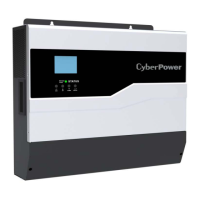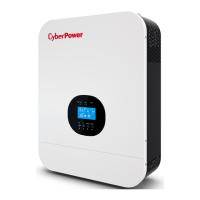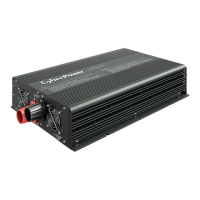Why does my Cyber Power Inverter work in battery mode when mains exist?
- SSusan PotterAug 4, 2025
The Cyber Power Inverter might be operating in battery mode even when mains are available due to several reasons. First, the input protector may have tripped; check if the AC breaker has tripped and ensure the AC wiring is properly connected. Second, the AC power quality might be insufficient (especially from shore power or a generator); in this case, verify that the AC wires are not too thin or too long, confirm the generator (if used) is functioning correctly, and check if the input voltage range setting is correct for your appliance. Finally, change the output source priority to Utility first.



